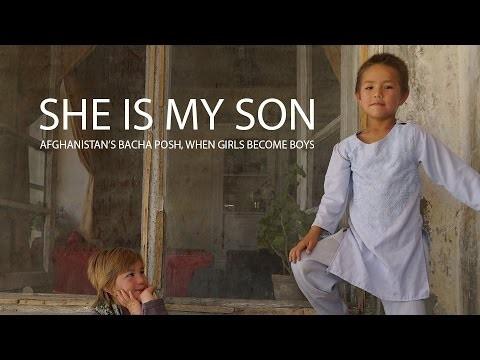Stereotype-Busting Documentary Reveals Hidden Afghan Culture
Girls dressing as boys is a hidden Afghan cultural tradition; not encouraged, yet, equally not taboo.
Watching an excellent RT documentary last night, I was introduced to the incredible world of the ‘Bacha Posh’ (Persian: بچه پوش, literally "dressed up as a boy").
For anyone with an interest in Afghan culture, this documentary is a must. The filming alone is beautifully done and allows an incredible insight into life in Afghanistan.
In a society where men and women have fundamentally different rights and freedoms, families in which there is no male member are often at a disadvantage. To overcome this, the cultural practice of ‘Bacha Posh’ comes into play which involves young children (prior to the age of puberty) being raised as boys rather than girls.
Origins of Bacha-Posh
The practise goes back at least a century and it’s thought that it evolved from women who dressed as men so that they could take part in battles. This cultural process is not intended to ‘trick’ people. Outsiders are fully aware that the child is really a girl and they are typically respectful of the new rights to be afforded to the child when they take on the male role.
By dressing as boys, children can navigate the world outside of their home with the same freedoms accorded to men, yet denied to women. They can, for example, shop unaccompanied or work. They can also act as chaperones to their sisters or their mothers who may otherwise be unable to leave the house to carry out tasks or attend school.
In a family featured in the documentary, the practice is imposed on one of seven female daughters to help the family survive financially. The father discusses the considerable stigma he has faced relating to his lack of a male heir, and he also discloses that life is financially difficult with so many children to feed and so little male help. As such, the decision is made to dress one of his daughters as a male and send her out to sell water.
This story is particularly hard to follow as the daughter is very feminine in appearance and in no way resembles a boy -even when dressed in boys’ clothing. She finds adjusting to life as bacha posh extremely difficult and is desperate to revert to being a girl. She is clearly a strong character however as she meets the challenges of working every day and contributing to the financial support of her family. Her father promises her that she can return to school when she turns 11 years old and when her younger sister is old enough to take the bacha posh role.
Conversely, we meet Asiya. Asiya is the only child in the documentary who has actively chosen to be bacha posh. Her father brought Asiya and her brother up to be ‘boys’ and would often refer to his ‘two sons’. Asiya states that her reason for becoming bacha posh is that she loves the freedom that comes with dressing as a boy. The practise enables her to go to shopping malls, leave the house unaccompanied and as she states, play sport, “A man can play sport but if a woman does, then people say it’s a disgrace”. She complains that at school, her teachers won’t ‘let me be’. Asiya covers her hair in class out of respect for her teachers but otherwise remains uncovered. She resolutely expresses the commitment that she will never dress like a boy, as in Afghan society, the practise of bacha posh is only tolerated until a child reaches puberty.
It is one of the most fascinating documentaries that I have seen on Afghan culture in a long time.
If you get the chance, then I strongly recommend that you watch this documentary. Here it is!
Related Posts
By accepting you will be accessing a service provided by a third-party external to https://www.commisceo-global.com/

 +44 0330 027 0207 or +1 (818) 532-6908
+44 0330 027 0207 or +1 (818) 532-6908
